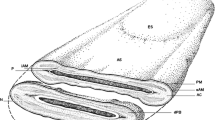Abstract
Purpose: The objective was to develop a method that couldaccommodate microvolumes of solubilized human (ZP) andsperm for assessing the induction of the acrosome reaction.
Methods: A microassay using 1 μl of 2.5, 1.25, 0.6, 0.3,and 0.125 ZP/μl incubated with 1 μl of a highly motilesperm suspension for 60 min. As a control and parallelto the microassay a standard acrosome reaction techniquewas performed.
Results: No significant differences were observed betweenthe percentage acrosome-reacted sperm reported by the twoassays under basal conditions (spontaneous) or after inductionwith a Ca2+ ionophore or solubilized ZP. At a ZPconcentration of 0.6 ZP/μl, the percentages ofacrosome-reacted spermatozoa in both techniques were significantlyhigher compared to the spontaneous acrosome reactionresults, namely 18% and 17%, compared to 10% and 10%,respectively. Approximately a 30% level of acrosomal exocytosis was induced with 2.5 ZP/μl in both methods.
Conclusions: This newly devised microtechnique is easy andrapid to perform, is repeatable, and facilitates the use ofminimal volumes of solubilized human ZP (even a single ZP)for assessment of the inducibility of the acrosome reaction ofa homologous sperm population.
Similar content being viewed by others
REFERENCES
Oehninger S, Acosta A, Veeck L, Brzyski R, Kruger TF, Muasher SJ, Hodgen GD: Recurrent failure of in vitro fertilization: Role of the hemizona assay in the sequential diagnosis of specific sperm-oocyte defects. Am J Obstet Gynecol 1991; 164:1210–1215
Amman RP, Hammerstedt RH: In vitro evaluation of sperm quality: An opinion. J Androl 1993;14:397–406
Oehninger SC, Franken DR, Kruger TF: Approaching the next millenium: How should we manage andrology diagnosis in the intracytoplasmic sperm injection era? Fertil Steril 1997;67: 434–436
World Health Organization. WHO Laboratory Manual for the Examination of Human Semen and Sperm-Cervical Mucus Interaction, 3rd ed. Cambridge University Press, Cambridge, 1992
Oehninger SC: An update on the laboratory assessment of male fertility. Human Reprod 1995;10(Suppl 1):38–45
ESHRE Andrology Special Interest Group: Consensus Workshop on Advanced Diagnostic Andrology Techniques. Hum Reprod 1996;11:1463–1479
Cummins JM, Pember SM, Jequier AM, Yovich JL, Hartman PE: A test of the human sperm acrosome reaction following ionophore challenge. Relationship to fertility and other seminal parameters. J Androl 1991;12:98–103
Tesarik J. Acrosome reaction testing. In Consensus Workshop on Advanced Diagnostic Andrology Techniques. ESHRE Andrology Special Interest Group. Hum Reprod 1996;11:5–8
Henkel R, Müller C, Miska W, Gips H, Schill W-B: Determination of the acrosome reaction in human spermatozoa is predictive of fertilization in vitro. Hum Reprod 1993;12: 2128–2132
Henkel R, Franken D.R. Habenicht UF: Zona pellucida as physiological trigger for the induction of the acrosome reaction. Andrologia 1998;30:275–280
Cross NL, Morales P, Overstreet JP, Hanson FW: Induction of the acrosome reaction by the human zona pellucida. Biol Reprod 1988;38:235–244
Mahony M, Oehninger S, Clark G, Acosta A, Hodgen GD: Inhibition of zona pellucida-induction of the acrosome reaction in human spermatozoa by the complex polysaccharide, fucoidin. Contraception 1991;44:657–665
Bielfeld PP, Faridi A, Zaneveld LJD, de Jonge CJ: The zona pellucida induced acrosome reaction of human spermatozoa is mediated by protein kinases. Fertil Steril 1994;61:536–541
Liu DY, Baker HWG: Disordered acrosome reaction of spermatozoa bound to the zona pellucida: A newly discovered sperm defect causing infertility with reduced sperm-zona penetration and reduced fertilization in vitro. Hum Reprod 1994;9: 1694–1700
Franken DR, Morales P, Habenicht UF: Inhibition of G protein in human sperm and its influence on acrosome reaction and zona pellucida binding. Fertil Steril1996;66:1009–1011
Franken DR, Bastiaan HS, Kidson A, Wranz P, Habenicht U-F: Zona pellucida mediated acrosome reaction and sperm morphology. Andrologia 1997;29:311–317
Quinn P, Kerin JF, Warnes GM: Improved pregnancy rate in human in vitro fertilization with the use of a medium based on the composition of human tubal fluid. Fertil Steril 1985;44: 493–498
Hammit DG, Syrop CH, Walker DL, Bennet MR: Conditions of oocyte storage and use of non-inseminated as compared with inseminated, nonfertilized oocytes for the hemizona assay. Fertil Steril 1993;60:131–136
Morales P, Cross NL, Overstreet JW, Hanson FW: Acrosome-intact and acrosome-reacted human sperm can initiate binding to the zona pellucida. Dev Biol 1989;133:385–392
Morales PJ, Cross NL: A new procedure for determining acrosomal status of very small numbers of human sperm. J Histochem Cytochem 1989;37:1291–1292
Yanagimachi R, Lopata A, Odom CB, Bronson RA, Mahi CA, Nicolson GL: Retention of biologic characteristics of zona pellucida in highly concentrated salt solution: The use of salt-stored eggs for assessing the fertilizing capacity of spermatozoa. Fertil Steril 1979;31:562–567
Burkman LJ, Coddington CC, Franken DR, Kruger TF, Rosenwaks Z, Hodgen GD: The hemizona assay: Development of a diagnostic test for the binding of human spermatozoa to the human zona pellucida to predict fertilization potential. Fertil Steril 1988;49:688–693
Franken DR, Oosthuizen WT, Cooper S, Kruger TF, Burkman LJ, Coddington CC, Hodgen GD: Electron microscopic evidence on the acrosomal status of bound sperm and their penetration into human zonae pellucidae after storage in a buffered salt solution. Andrologia 1991;23:205–208
Brewis IA, Clayton R, Barratt CLR, Hornby DPJ, Moore HDM: Recombinant human zona pellucida glycoprotein 3 induces calcium influx and acrosome reaction in human spermatozoa. Human Reprod 1996;2:583–589
Chapman NR, Barrattt LR: The role of carbohydrate in sperm-ZP3 adhesion. Mol Hum Reprod 1996;2:767–774
Coddington CC, Fulgham DC, Alexander NJ, Johnson D, Herr JC, Hodgen GD: Sperm bound to zona pellucida in hemizona assay demonstrate acrosome reaction when stained with T-6 antibody. Fertil Steril 1990;54:504–508
Mortimer D: The essential partnership between diagnostic andrology and modern assisted reproductive technologies. Hum Reprod 1994;9:1209–1213
Author information
Authors and Affiliations
Rights and permissions
About this article
Cite this article
Franken, D.R., Bastiaan, H.S. & Oehninger, S.C. Physiology: Physiological Induction of the Acrosome Reaction in Human Sperm: Validation of a Microassay Using Minimal Volumes of Solubilized, Homologous Zona Pellucida. J Assist Reprod Genet 17, 156–161 (2000). https://doi.org/10.1023/A:1009418222397
Issue Date:
DOI: https://doi.org/10.1023/A:1009418222397



